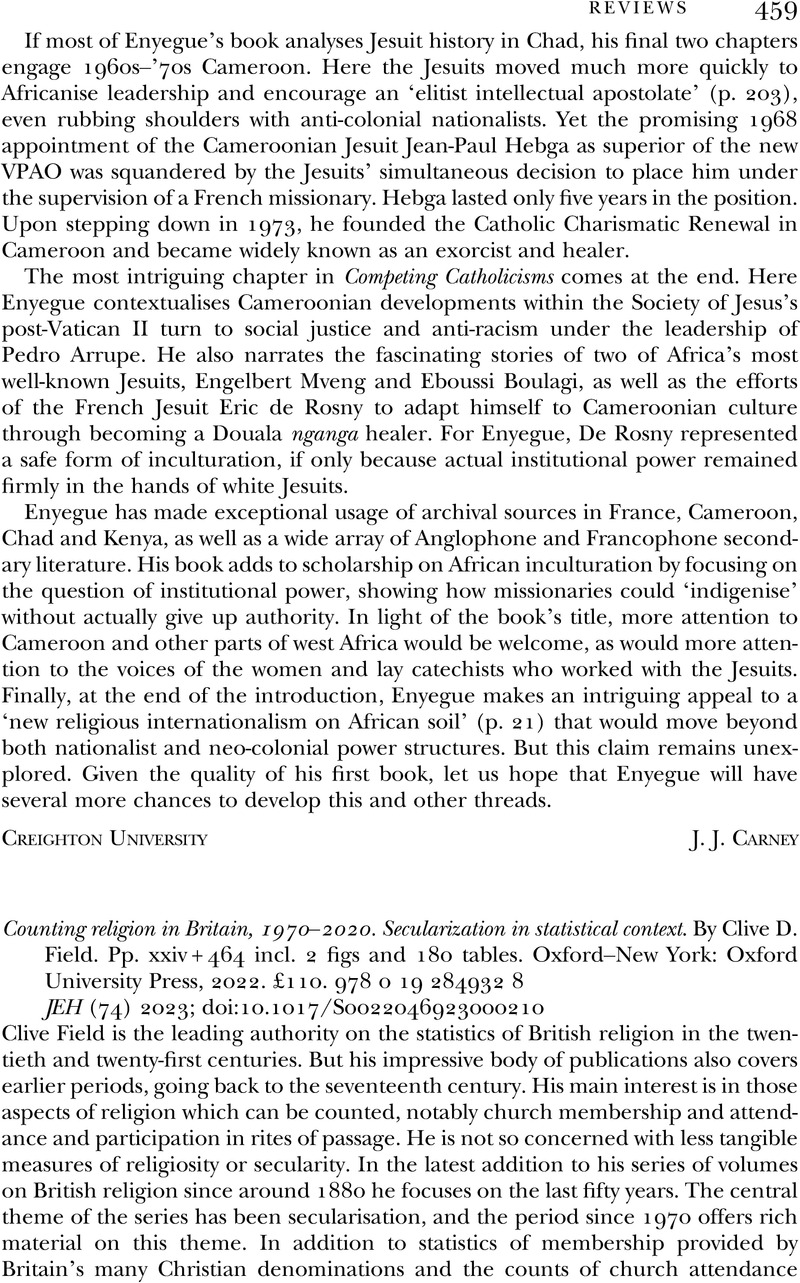No CrossRef data available.
Article contents
Counting religion in Britain, 1970–2020. Secularization in statistical context. By Clive D. Field. Pp. xxiv + 464 incl. 2 figs and 180 tables. Oxford–New York: Oxford University Press, 2022. £110. 978 0 19 284932 8
Review products
Counting religion in Britain, 1970–2020. Secularization in statistical context. By Clive D. Field. Pp. xxiv + 464 incl. 2 figs and 180 tables. Oxford–New York: Oxford University Press, 2022. £110. 978 0 19 284932 8
Published online by Cambridge University Press: 25 April 2023
Abstract
An abstract is not available for this content so a preview has been provided. Please use the Get access link above for information on how to access this content.

- Type
- Reviews
- Information
- Copyright
- Copyright © Cambridge University Press 2023



